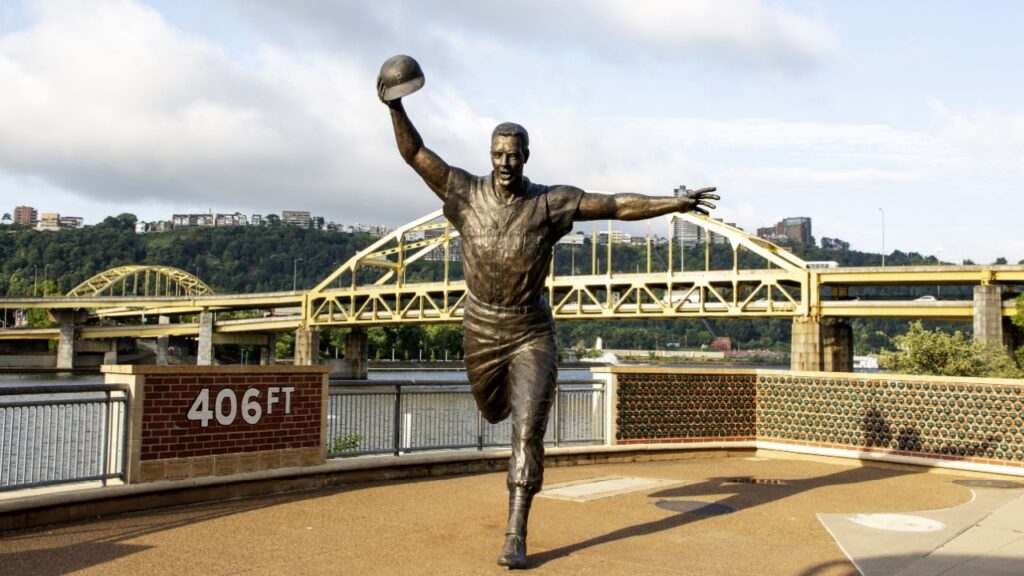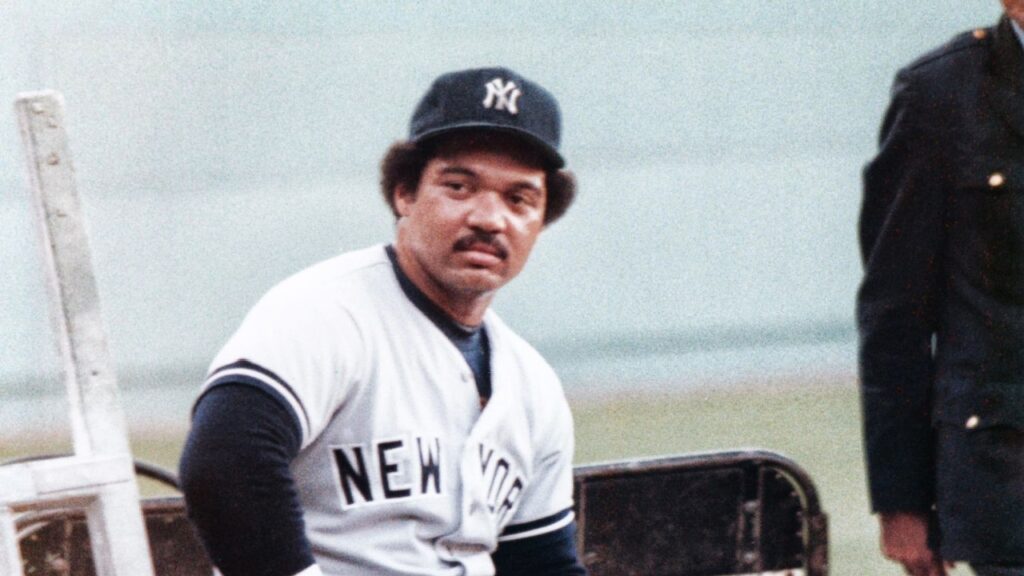
The World Series is when baseball feels its biggest. For more than a hundred years, the Fall Classic has given fans plays they still talk about. Some moments changed games. Some changed history.
Legendary Game-Winners

Bill Mazeroski
Bill Mazeroski’s walk-off in Game 7 of the 1960 World Series is one of baseball’s most famous endings. On October 13, 1960, Mazeroski led off the bottom of the ninth inning and hit a line drive over the left-field wall off New York Yankees pitcher Ralph Terry. The blast gave the Pittsburgh Pirates a 10–9 win over the Yankees and the Pirates’ first title since 1925.
It is special because it is the only time the World Series ended with a walk-off home run in a Game 7. The whole city poured into the streets to celebrate, and the moment still plays on highlight reels.
Don Larsen
Four years earlier, Don Larsen threw the only perfect game in World Series history. On October 8, 1956, Larsen pitched a perfect game for the New York Yankees against the Brooklyn Dodgers in Game 5. A perfect game means no batter reached base, no hits, no walks, no errors.
Larsen finished all nine innings without a batter reaching base, and the moment is still the only perfect game ever thrown in a World Series. That night is remembered for Larsen’s pitching and for the hush that fell on Yankee Stadium when the last out was recorded.
Kirk Gibson
Kirk Gibson’s pinch-hit home run in Game 1 of the 1988 World Series still gives people chills. On October 15, 1988, Gibson had injuries in both legs and was not expected to play much. But in the bottom of the ninth with two outs and the Dodgers trailing, he came in to pinch hit.
He faced Oakland closer Dennis Eckersley and hit a two-run, walk-off home run that won the game for the Los Angeles Dodgers. The shot, Gibson’s limp around the bases, and the raw emotion made the moment feel like a movie scene and a defining image of October grit.
Joe Carter
Joe Carter’s walk-off home run in Game 6 of the 1993 World Series is a rare and joyful finish. On October 23, 1993, with the Toronto Blue Jays down to their last out, Carter hit a three-run home run off Mitch Williams in the bottom of the ninth. The blast gave the Blue Jays an 8–6 win and a second straight championship.
It is one of only two World Series that ended on a walk-off home run, and it stands out because the Blue Jays were behind when Carter stepped to the plate. Toronto fans still treasure the replay of that moment.
Luis Gonzalez
Luis Gonzalez’s Game 7 single for the Arizona Diamondbacks in 2001 is also special. On November 4, 2001, with the series tied and the game in the bottom of the ninth, Gonzalez hit a soft single off Yankees closer Mariano Rivera. The ball scored the winning run and gave Arizona its first World Series crown.
The scene mattered because it came against a Yankees team many fans viewed as a modern dynasty. The clip of Gonzalez rounding the bases and the Diamondbacks celebrating is still a key image from that era.

Historic Performances and Perfects
Reggie Jackson
Reggie Jackson earned the nickname “Mr. October” with his work in the 1977 World Series. In Game 6 on October 18, 1977, Jackson hit three home runs in one game, and each came on a different pitch from a different pitcher. His big day helped the New York Yankees clinch the title and put Jackson into October lore.
Hitting three homers in a single World Series game is rare, and Jackson’s power display made the phrase “Mr. October” stick for decades.
Don Larsen
Don Larsen’s perfect game returns in this section because the performance stands as a single night of true baseball history. Perfect games are rare in any season; in the World Series, they are unique. Larsen’s outing combined sharp pitching, steady defense, and perfect timing.
The last out remains a moment that slows viewers down when the film plays. Museums and the Hall of Fame keep photos and programs from that night as part of baseball memory.
Babe Ruth
Babe Ruth’s “called shot” from the 1932 World Series is half myth and half fact, but it has a huge place in baseball culture. In Game 3 on October 1, 1932, at Wrigley Field, Ruth pointed toward the outfield and then hit a long home run. Some eyewitnesses said he called his shot; others said he was pointing for another reason.
The story grew into legend, and the jersey tied to that game has become a prized piece of sports history. That mixture of fact and myth shows how one moment can become far bigger than a box score.
How these performances changed baseball goes beyond the numbers.
Carlton Fisk
Carlton Fisk’s 1975 home run led TV producers to change how they shot the game, sometimes following the player instead of the ball. That camera choice made sports TV feel closer and more human, and it helped turn Fisk’s wave into a lasting image.
Great moments can change how fans see the game, how it is shown on TV, and even how future players are remembered.

Unforgettable Plays and Heartbreak
The 1986 World Series is remembered for both drama and heartbreak. On October 25, 1986, the Boston Red Sox appeared one out away from their first title since 1918. Instead, the New York Mets rallied late.
With one out and the tying run on base in the tenth, Mookie Wilson hit a slow ground ball down the first-base line that rolled under the legs of Boston first baseman Bill Buckner.
The error allowed the Mets to win Game 6 and then to take Game 7 for the championship. Buckner’s miscue is replayed often, but his long career and later life show that one error does not define a person.
Carlton Fisk’s 12th-inning home run in Game 6 of the 1975 World Series is one of those special, quiet moments that turn into legend. On October 21, 1975, Fisk hit Pat Darcy’s pitch down the left-field line and seemed to wave the ball fair as he ran. The ball hit the foul pole, and the Red Sox won that game to force a Game 7.
The decision by the TV director to hold the camera on Fisk instead of following the ball made the image personal and emotional. That single edit changed live sports coverage forever.
Enos Slaughter’s “Mad Dash” in the 1946 World Series shows how hustle can decide a game. In Game 7 on October 15, 1946, Slaughter scored from first base on a hit by Harry Walker. Slaughter ran hard, ignored a stop sign from the third-base coach, and barreled home to score the deciding run and give the St. Louis Cardinals the title.
The play is often called one of baseball’s great baserunning moments and is remembered with stories, video, and a statue in St. Louis.
The 2016 World Series Game 7 between the Chicago Cubs and the Cleveland Indians was another unforgettable night. On November 2, 2016, the Cubs ended a 108-year title drought with an 8–7 win in ten innings. The game had a late tie, a rain delay, and extra-inning heroics.
Ben Zobrist’s RBI double in the 10th gave the Cubs the lead, and Miguel Montero added a key hit to make the margin safe. The celebration that followed felt like the release of a century of hope for many fans.
Not every big World Series moment is simple to love. The 2017 World Series produced big highlights, but it later came under a cloud when investigations showed the winning team, the Houston Astros, used illegal sign-stealing in parts of the season and postseason.
The scandal led to punishments and a long debate over how to judge the on-field moments. It shows that history can be complicated and that later facts can change how fans feel about a series.
Frequently Asked Questions
What is the only perfect game in World Series history?
Don Larsen’s perfect game for the New York Yankees in Game 5 of the 1956 World Series is the only perfect game in World Series play. He retired every batter in the game on October 8, 1956.
How many World Series ended on a walk-off home run?
Two World Series have ended on a walk-off home run. Bill Mazeroski’s Game 7 homer in 1960 for the Pittsburgh Pirates, and Joe Carter’s Game 6 homer in 1993 for the Toronto Blue Jays. Both plays are rare and part of World Series lore.
What player is known as “Mr. October”?
Reggie Jackson earned the nickname “Mr. October” after his big World Series performance in 1977 when he hit three home runs in Game 6. His clutch hitting in that series made the name stick.
What happened with Bill Buckner?
Bill Buckner made a fielding error on a slow ground ball in Game 6 of the 1986 World Series. The error allowed the New York Mets to score and win the game in extra innings. The mistake hurt the Red Sox and became a replayed image for years. Buckner later made peace with fans and lived a life beyond that play.
Is the Babe Ruth “called shot” real?
People still argue whether Babe Ruth actually called his shot in the 1932 World Series. The story says he pointed to the stands and then hit a home run. Some witnesses say he did, and some say he did not. The moment became folklore and shows how a single act can turn into a lasting sports legend.
Why These Moments Matter
These plays do more than fill a highlight reel. They shape how people remember a season, a team, or an entire city. A single swing or a single error can stay in the public mind for decades. Cities throw parades, players get Hall of Fame talk, and old fans teach new fans the stories.
The clips are shown in museums and on the MLB site, and young fans learn these games the way older fans learned them, by watching and retelling. That passing-down of stories is a big reason why the World Series matters beyond box scores and stats.
Conclusion
- The World Series has given baseball some of its brightest and most dramatic moments.
- From perfect games to walk-off homers, from clutch hitting to heartbreak, the Fall Classic makes stories people retell for generations.
- The moments above are a mix of great plays, big swings, and plays that changed lives.
- They show why baseball is tied to memory and why fans keep coming back each October.
- Whether you grew up watching these plays or just read about them here, they are part of America’s sports story.
Read More
- The Rise of International Players in MLB
- These Players Are Heating Up for the 2025 MLB Playoff Push
- How Jackie Robinson Changed American Sports Forever
This article was made with AI assistance and human editing.



